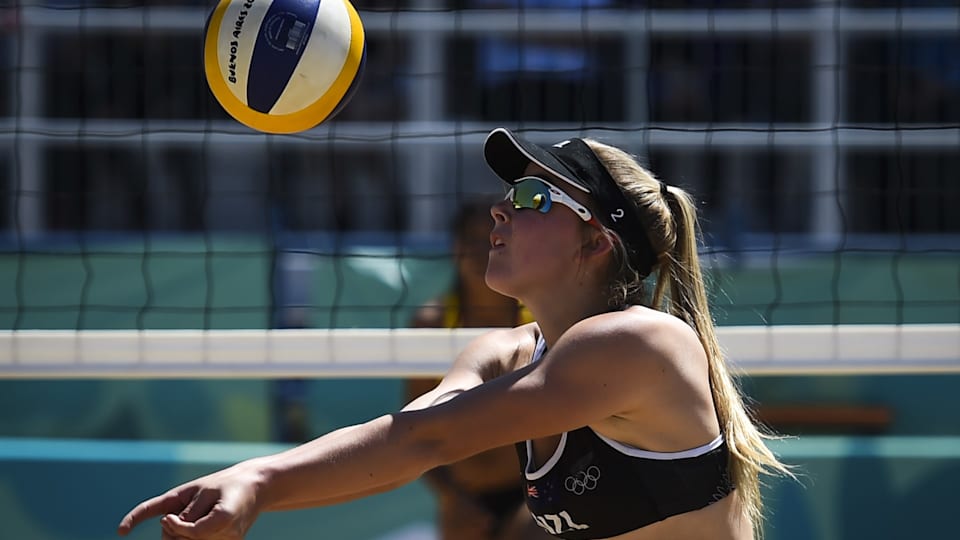
Beach volleyball is one of the most popular recreational activities in the world.
An iteration of indoor volleyball - founded in 1895 - beach volleyball was popularised in the early 1920s in Santa Monica, California, where it became a favourite among the residents as a leisure activity.
The sport also found its patrons among the many Californian beach clubs, which hosted local tournaments.
While the rules of beach volleyball remained mostly consistent with the indoor version of the sport throughout the 1920s, the players at the Santa Monica Athletic Club started experimenting with just two players on either side of the court, which later became the format that was adopted for professional beach volleyball.
On Labor Day weekend in 1976, the Will Rogers State Beach in the Pacific Palisades, California played host to the Olympia World Championship of Beach Volleyball, the first professional beach volleyball tournament in the United States. UCLA Bruins duo Greg Lee and Jim Menges won the competition.
Key differences between indoor and beach volleyball
Unlike indoor volleyball, where the two competing teams field six players each, teams in beach volleyball can only field a two players per side on the court. There are no substitutions allowed in beach volleyball.
As opposed to the hardcourt in indoor volleyball, beach volleyball is a sport played between two teams on a sand court.
The match starts with a coin toss to decide which team serves first. Both players on the team have to serve alternatively after every change in serve upon winning a point.
Beach volleyball rules and scoring system
Beach volleyball is a best-of-three set contest unlike indoor volleyball where matches can go on till five sets.
The first two sets are played until one team reaches 21 points - as opposed to 25 in the indoor version for its first four sets - and the third and final deciding set, if required, is played to 15 points.
Each rally is worth a point and a team has to have a lead of at least two points while reaching the designated points tally - 21 in the first two sets and 15 in the third - to effectively win the set.
Hence, if the score is 20-20 in the first two sets or 14-14 in the decider, the set continues, even after the next point is scored, until one team builds a lead of two points over the other.
In the event that neither team wins the first two sets and the game extends to a third and final set, as per rules of beach volleyball, a coin toss precedes it to decide which team serves first in the decider.
How many players in beach volleyball
Blocker: The blocker is the player that guards the net and contests the opponent’s spikes with his or her longer reach and quick reflexes.
Defender: The defender guards the rest of the court and digs out spikes or chases looped up shots into the open areas of the court. The defender is usually the more agile of the two team-mates since it takes tremendous acceleration to get across the court and keep rallies alive.
However, unlike indoor volleyball where each team has players with five defined roles, teams in beach volleyball usually use both their players as the blocker and defender based on whether the player is guarding the right-side or left-side of the court.
Winning a point in beach volleyball
Fewer number of players on the court and large open spaces opens up a much larger variety of creative avenues to score points as compared to indoor volleyball, where the spike is predominantly used to conclude rallies.
The roll shot is when a player loops the ball over the net and over an opponent’s block with a lot of topspin which gives it a sharp downward trajectory, giving the defender only a fraction of second to react and keep the rally alive.
A cut shot is when a player hits the ball across the court into the sand and close to the net in the opposition’s half, making it extremely difficult for the defender to read and dig out.
A pokey is when a player uses his knuckles to drop the ball into open spaces on the court.
Unlike indoor volleyball, a player can touch the ball two successive times only if the first touch came courtesy of an attempted block.
Stepping over the end line while serving, taking more than three touches before hitting the ball across the net into the opposition’s half and the ball bouncing out of bounds after hitting a player; all result in a loss of point.
Beach volleyball court size and equipment
Owing to the fewer number of players on the court and the difficulty encountered in moving with agility on the sand, the beach volleyball court size is smaller, and the ball is lighter as compared to those in the indoor variant.
As per FIVB guidelines, a beach volleyball court is 16m (52.5ft) long and 8m (26.2ft) wide.
The beach volleyball net height is the same as that of indoor volleyball, i.e., 2.43m (7.97ft) tall for men’s and 2.24m (7.35ft) tall for women’s competition.
As per FIVB regulations, a beach volleyball ball must weigh between 260-280gms (9.2-9.87 ounces) with a circumference of 66-68cm (25.98-26.77 inches) with a psi of 2.48-3.20.
Olympics beach volleyball winners
At the Olympics, beach volleyball was a demonstration sport at Barcelona 1992 and made its official Summer Olympic debut as a discipline in the men’s and women’s category in the subsequent edition at Atlanta 1996.
